When you look at your furry friend cuddling beside you, it might be hard to believe that deep down, there’s a touch of their wild ancestors still pulsing through their veins. Yet, domesticated dogs and wild wolves share an exciting lineage that shows up in more than just howling at the moon. Some dog breeds have retained more of that wild heart and spirit than others. Let’s dive into a list of 15 dog breeds that carry the legacy of wolves within them, in ways that will surprise and delight you.
1. Siberian Husky
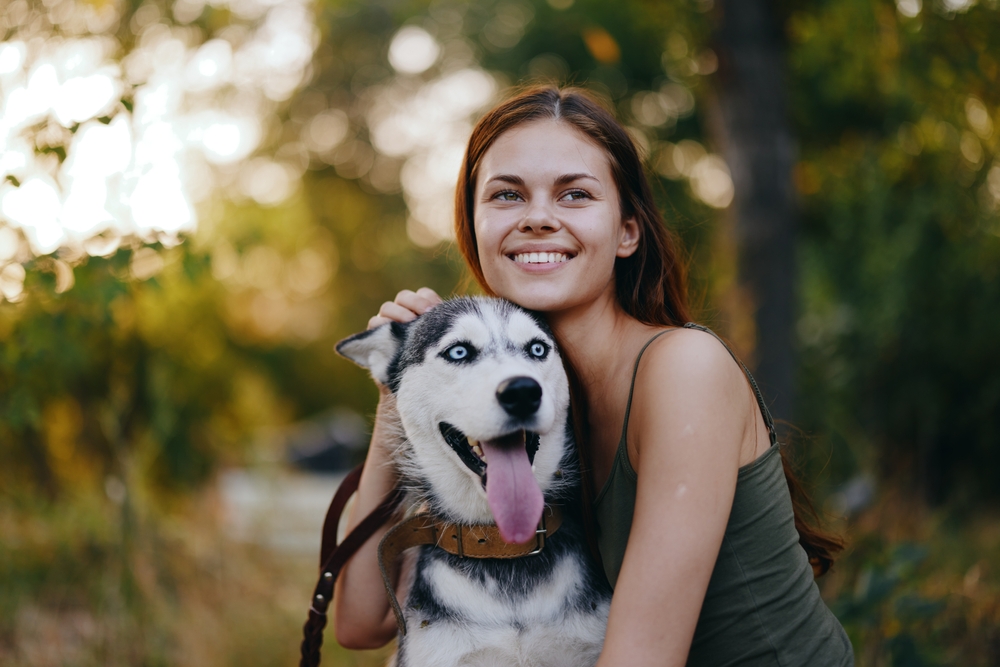
Siberian Huskies are notorious for their striking resemblance to wolves, with their piercing blue eyes and thick double coat. It’s not just looks, though—these dogs have energy levels that could give a wolf a run for its money. Originally bred to pull sleds in harsh Arctic climates, Huskies have a natural endurance and a spirit of adventure. According to The Spruce Pets, they love long runs and have a natural instinct to roam, making them feel right at home in wide-open spaces. Despite their wild energy, Huskies are incredibly social and friendly with people and other animals.
Their independent streak can make training a bit of a challenge, but with consistency and patience, they become loyal companions. Huskies are known to ‘talk’ with a range of vocalizations, from howls to what can only be described as doggy conversations. This communication style is reminiscent of wolves, further emphasizing their wild heritage. They require a good deal of physical and mental stimulation to keep them happy. If you’re seeking a dog that embodies the spirit of the wild but is still a wonderful family pet, the Siberian Husky is a perfect choice.
2. Alaskan Malamute
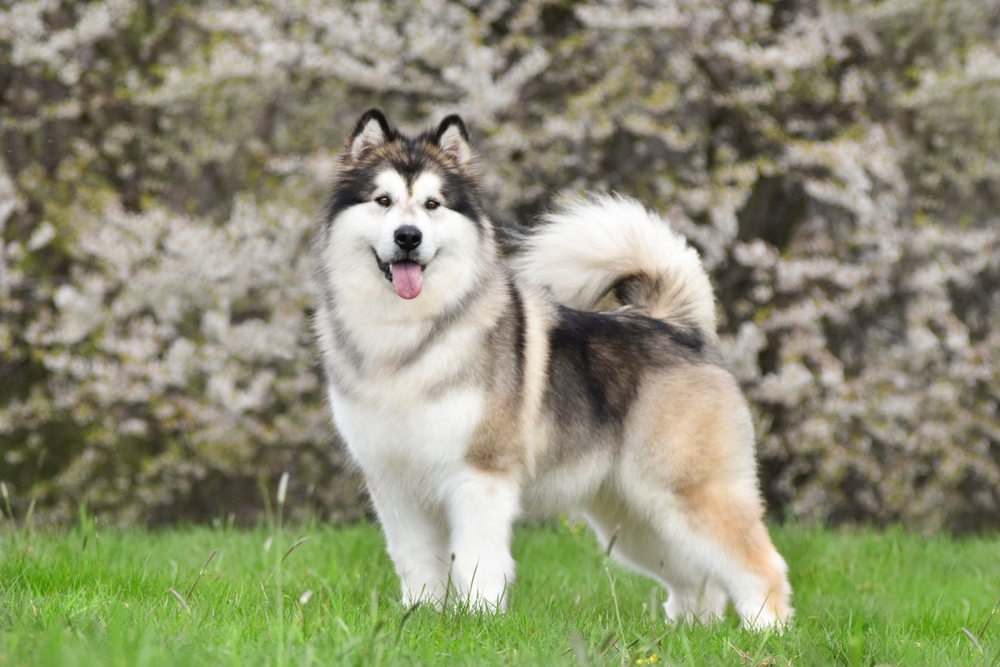
The Alaskan Malamute is another breed that closely resembles their wolf ancestors, both in appearance and demeanor. Known for their strength, they were originally bred to haul heavy freight as sled dogs, and they still carry that hardworking nature today. Malamutes are larger and more solidly built than Huskies, which makes them powerful and resilient. As highlighted by Purina, this breed thrives on physical activity and requires plenty of exercise to satisfy their natural instincts. Their independent and intelligent nature demands a confident and experienced handler.
Malamutes are pack animals at heart, so they do well in a family setting where they can feel part of the group. They’re particularly known for their friendly nature, often greeting people with enthusiasm. However, because of their size and energy, they need training from a young age to help channel their strength and spirit. Malamutes have a dense coat that requires regular grooming, especially during shedding season. Their loyalty and majestic presence make them a testament to the enduring spirit of the wolf.
3. German Shepherd
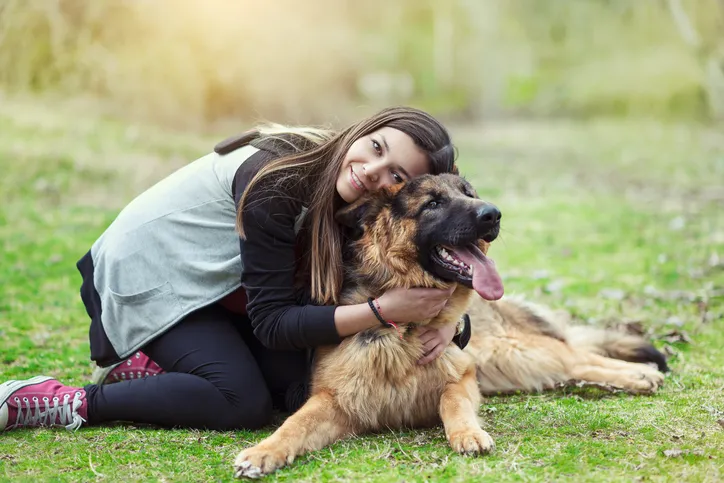
German Shepherds are a versatile breed with a strong work ethic and an even stronger resemblance to wolves. This breed is known for their intelligence and ability to learn commands quickly, which has made them popular choices for police and military roles. German Shepherds have a keen sense of duty and often display a protective nature towards their family, a trait that harks back to their wild ancestors. They are highly trainable and eager to please, making them excellent companions for those who can provide them with proper guidance and leadership. However, they need both mental and physical challenges to keep them occupied and happy.
When raised in a loving environment, German Shepherds form deep bonds with their family. They are loyal to a fault and will go to great lengths to protect their loved ones. This breed is naturally curious and very alert, making them excellent watchdogs. Their double coat requires regular grooming, especially during seasonal shedding. With their noble appearance and steadfast loyalty, German Shepherds carry the proud legacy of their wolf forebears.
4. Shiba Inu
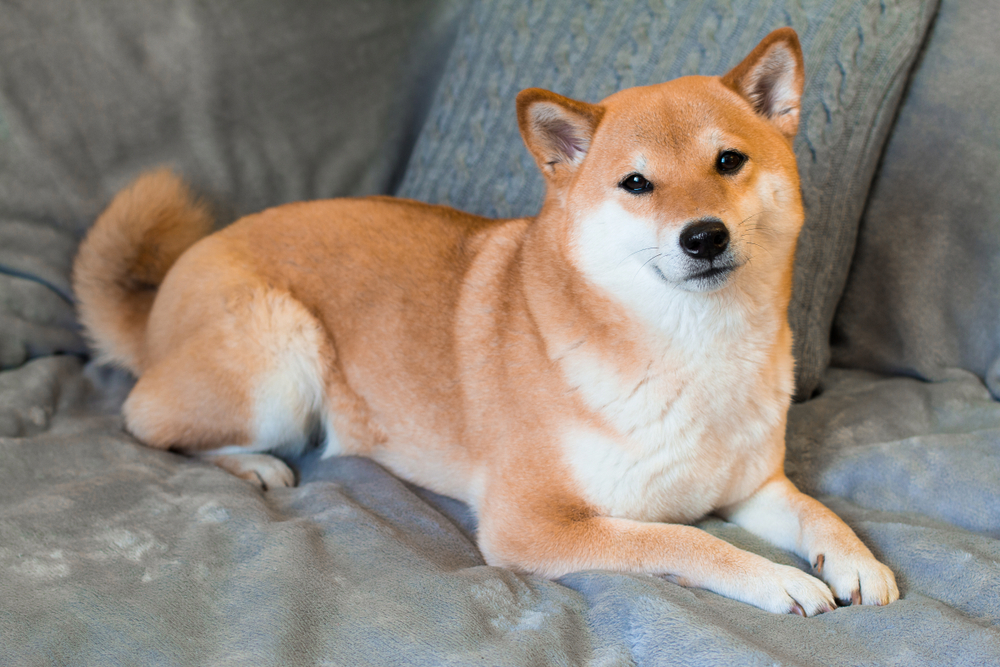
Shiba Inus might be small, but their spirit is mighty, with many characteristics that echo their wild counterparts. Hailing from Japan, these dogs are known for their bold personality and independence. Their alertness and agility were originally harnessed for hunting small game, showcasing their innate instincts. Shibas have a fox-like appearance, with sharp facial features and a curled tail—a nod to their wild lineage. They tend to form strong bonds with their family but can be aloof with strangers.
Living with a Shiba Inu means embracing their strong-willed nature, as they often like to do things on their terms. Training requires patience and consistency, but the results are rewarding, as they become devoted and attentive companions. Shibas are clean dogs, often compared to cats for their grooming habits and preference for cleanliness. Their spirited and independent demeanor is a reminder of their wild roots, making them a unique addition to any household. Despite their stubborn streak, their affection and loyalty make them beloved pets.
5. Alaskan Klee Kai

The Alaskan Klee Kai is a relatively new breed, but one that carries the heart of a wolf with pride. Part of the Spitz family, these dogs share a lineage that boasts the Siberian Husky, making them a miniature version with all the spirit intact. Known for their playful and energetic nature, Klee Kais are excellent for active families who can keep up with their zest for life. They have a high prey drive and are naturally alert, traits they share with their wild ancestors. Their size does not diminish their confidence, and they often believe they are larger than they really are.
Klee Kais are affectionate with their family but may be reserved or shy around strangers. Socialization from a young age helps them grow into well-rounded dogs. Their double coat requires regular grooming to manage shedding, especially if they inherit the Husky’s dense fur. Despite their small stature, Klee Kais have a howling voice that can surprise and delight, reminiscent of the call of the wild. They are a testament that even the smallest dog can carry a big wild heart.
6. Samoyed
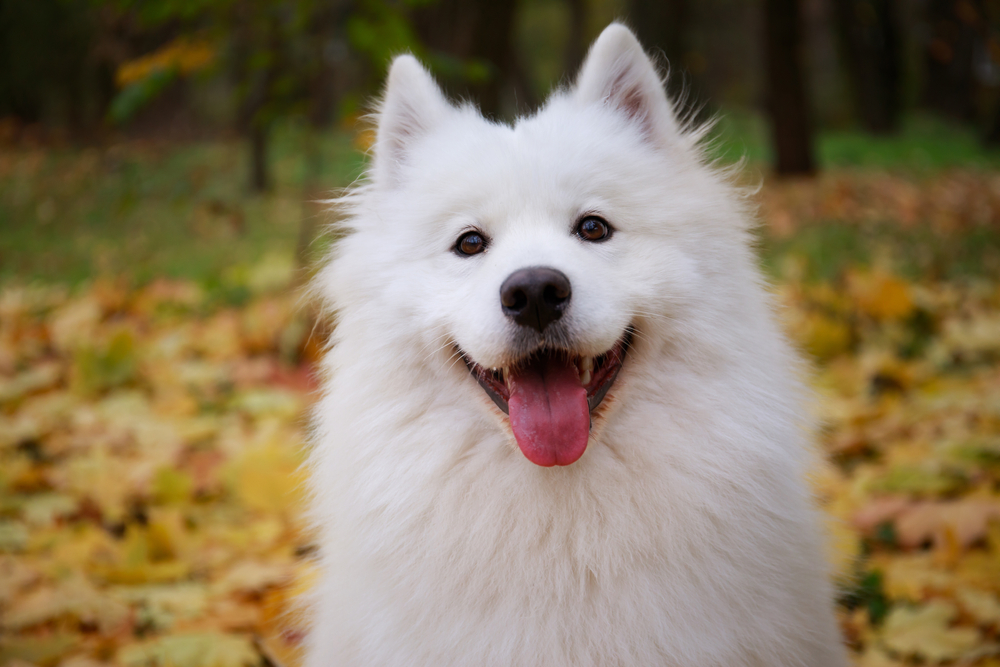
Samoyeds are renowned for their fluffy white coats and friendly, smiling faces, but beneath that gentle exterior lies the heart of a wolf. Originally bred to herd reindeer and haul sleds in Siberia, these dogs have retained their hardworking and resilient nature. They are known for their cheerful disposition and love being part of family activities. Samoyeds are highly social and do not do well when left alone for long periods, as they crave companionship. Their herding instincts make them naturally protective and attentive to their surroundings.
With their keen intelligence, Samoyeds are quick learners and respond well to training that uses positive reinforcement. Their thick coat requires regular grooming to prevent matting and to manage shedding. Samoyeds have a strong prey drive and will often chase after small animals if given the chance, a nod to their wild ancestry. Despite their fluffy appearance, they are powerful and agile dogs with great endurance. Their joyful demeanor and strong work ethic make them a delightful reminder of their wolf heritage.
7. Norwegian Elkhound
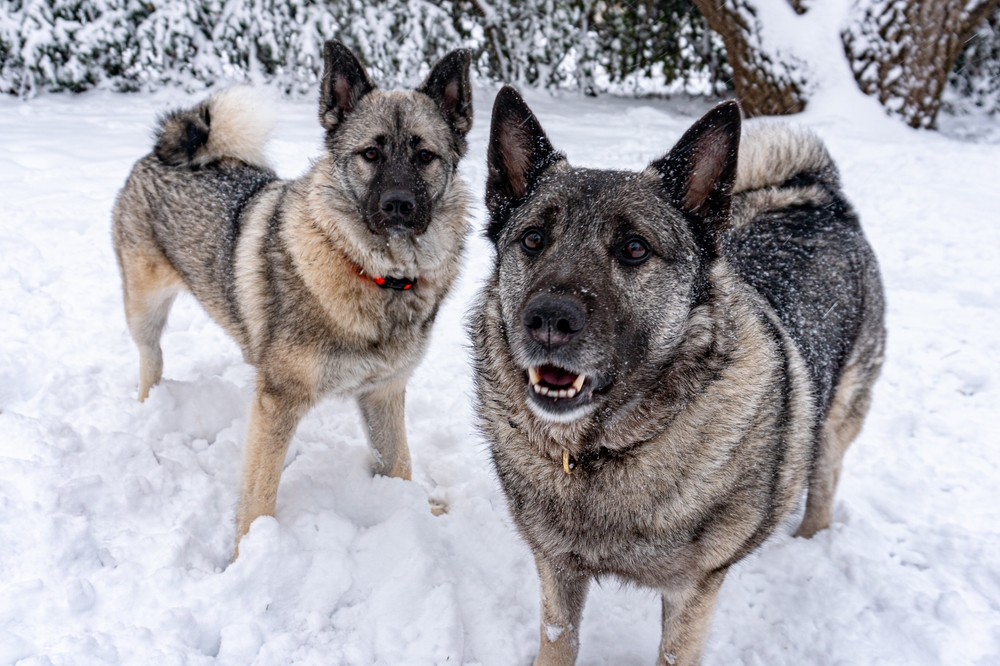
Norwegian Elkhounds have a rich history that dates back to Viking times, where they served as guardians and hunters. These dogs have a courageous spirit and an independent streak, making them closely tied to their wild roots. Known for their strong prey drive, Elkhounds were traditionally used to hunt large game, like elk and bear. They have a unique ability to track scents over long distances, showcasing their remarkable endurance and dedication. Elkhounds are friendly and affectionate with their family, often forming strong bonds that last a lifetime.
Their intelligence and alertness make them excellent watchdogs, always on the lookout for anything unusual. Elkhounds require regular exercise to keep their minds and bodies healthy, as they thrive in active environments. Their thick coat protects them in harsh weather but demands regular grooming to manage shedding. Despite their independent nature, they respond well to training that incorporates firm but gentle methods. The Norwegian Elkhound’s balance of independence and loyalty reflects their wolf-like heritage perfectly.
8. Finnish Lapphund
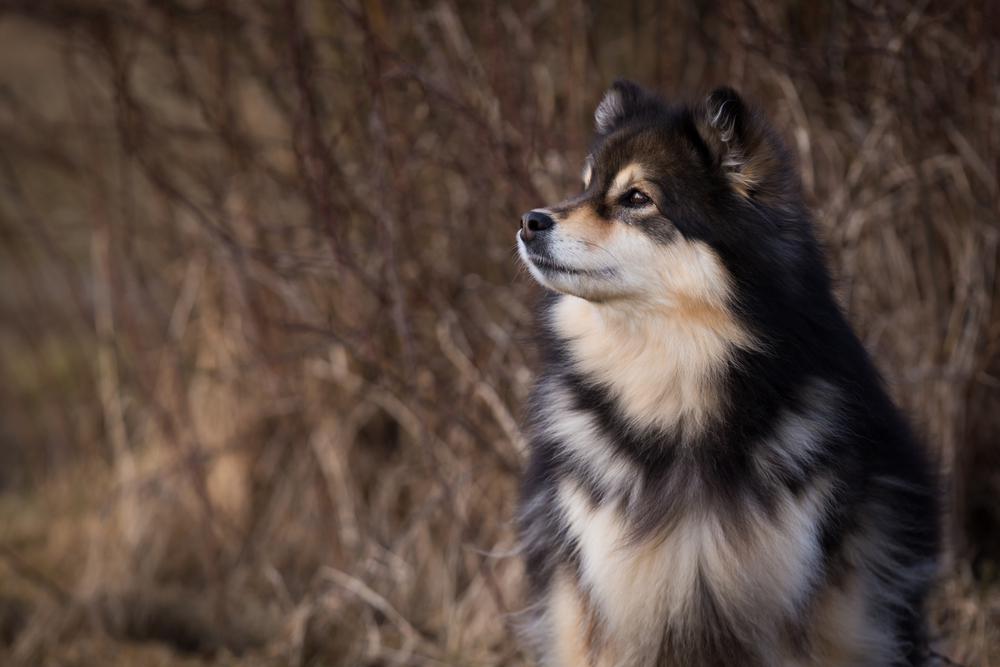
The Finnish Lapphund has an ancient lineage that speaks of survival in the harsh environments of Lapland. These dogs were originally used for herding reindeer, a task that required intelligence and resilience. They have a thick, weather-resistant coat that keeps them warm in the coldest of climates, much like their wild ancestors. Finnish Lapphunds are known for their friendly disposition and adaptability, making them wonderful companions. Despite their herding background, they are generally gentle and get along with other dogs and children.
Training a Finnish Lapphund is a rewarding experience, as they are eager to please and quick to learn. They have a playful and curious nature, always ready to explore the world around them. Their natural alertness makes them excellent watchdogs, although they are usually not aggressive. Regular exercise is essential for this breed to keep them healthy and happy. Their adaptable nature and deep-rooted resilience make the Finnish Lapphund a true embodiment of the wild spirit.
9. Swedish Vallhund
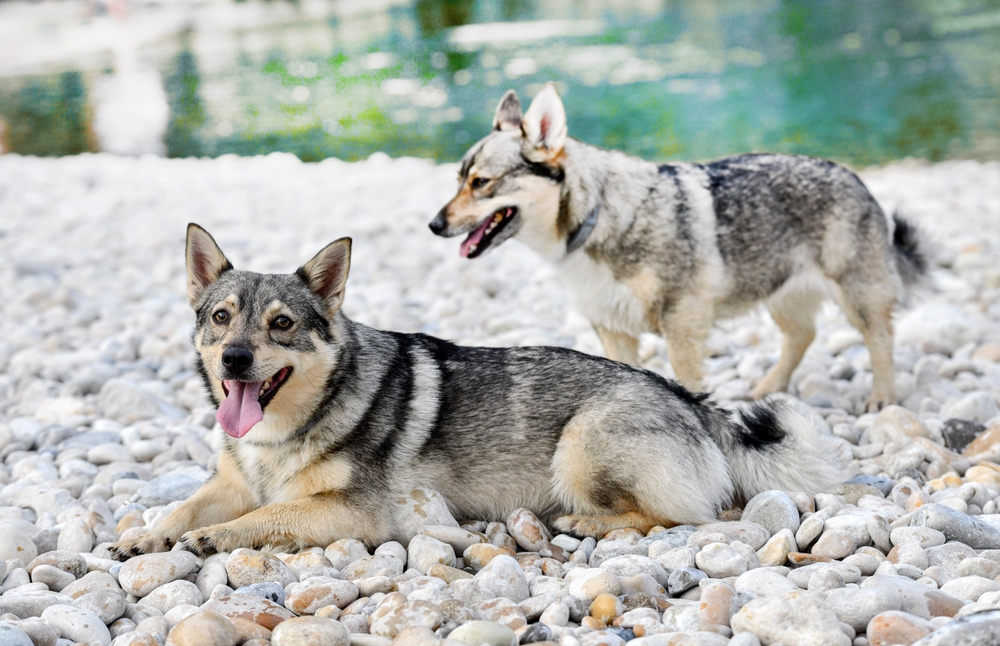
Swedish Vallhunds are small but mighty, with a rich history that ties them to the Vikings. These dogs are known for their energetic and playful nature, traits that have helped them endure through the ages. With their unique appearance, including a long body and short legs, Vallhunds have a distinct wolf-like presence. They were traditionally used for herding cattle, a task that required intelligence and resourcefulness. Vallhunds are highly social and thrive in environments where they can be part of family activities.
Training a Swedish Vallhund is an engaging experience, as they are intelligent and quick to pick up new skills. They have a strong prey drive and enjoy activities that challenge both their minds and bodies. Regular grooming is needed to maintain their dense coat, especially during seasonal shedding. Vallhunds are known for their vocal nature, often ‘talking’ with a range of sounds reminiscent of their wild cousins. Despite their small size, their heart and spirit are as big as their wolf ancestors.
10. Utonagan
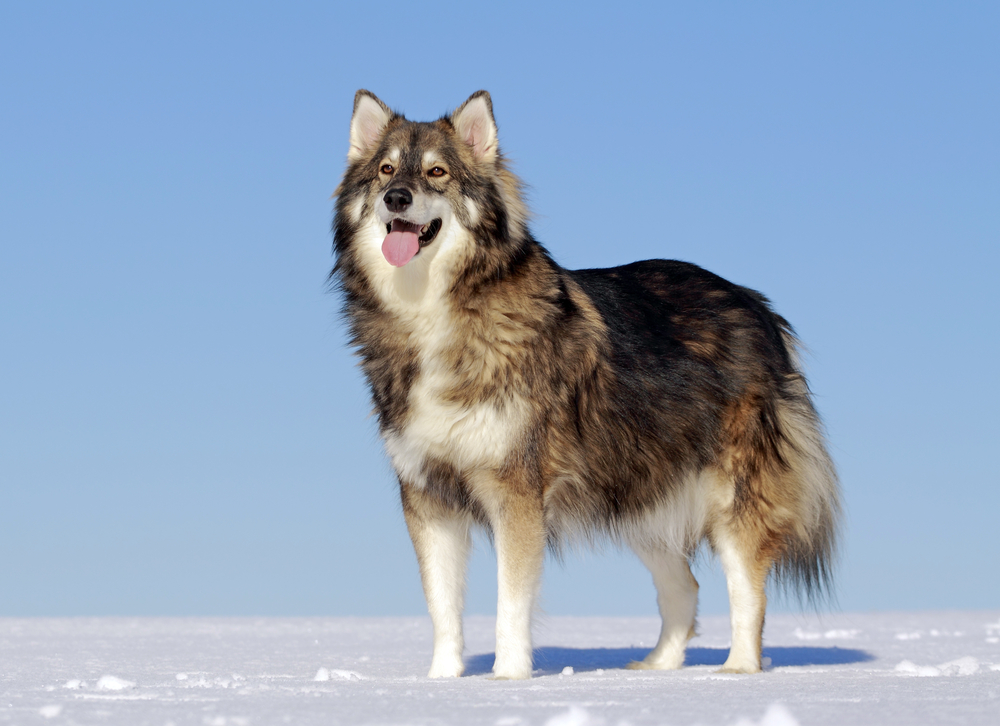
The Utonagan is a breed specifically developed to look like a wolf, and they certainly do not disappoint. With their striking resemblance to wolves, these dogs have a majestic presence that turns heads. Utonagans are friendly and gentle, making them excellent family pets despite their wild looks. They are highly intelligent and enjoy challenges that engage their minds, a trait shared with their wild ancestors. While they love human companionship, Utonagans also have an independent streak that requires patient training.
Socialization from a young age is essential to ensure they grow into well-rounded adults. Utonagans have a thick double coat that requires regular grooming to manage shedding and keep their fur in top condition. Exercise is crucial for this breed, as they have high energy levels and a love for outdoor adventures. Their gentle nature and striking appearance make them a living testament to the enduring spirit of the wolf. If you want a dog that looks like it just wandered out of the wild but has a heart full of love, the Utonagan might be for you.
11. Native American Indian Dog
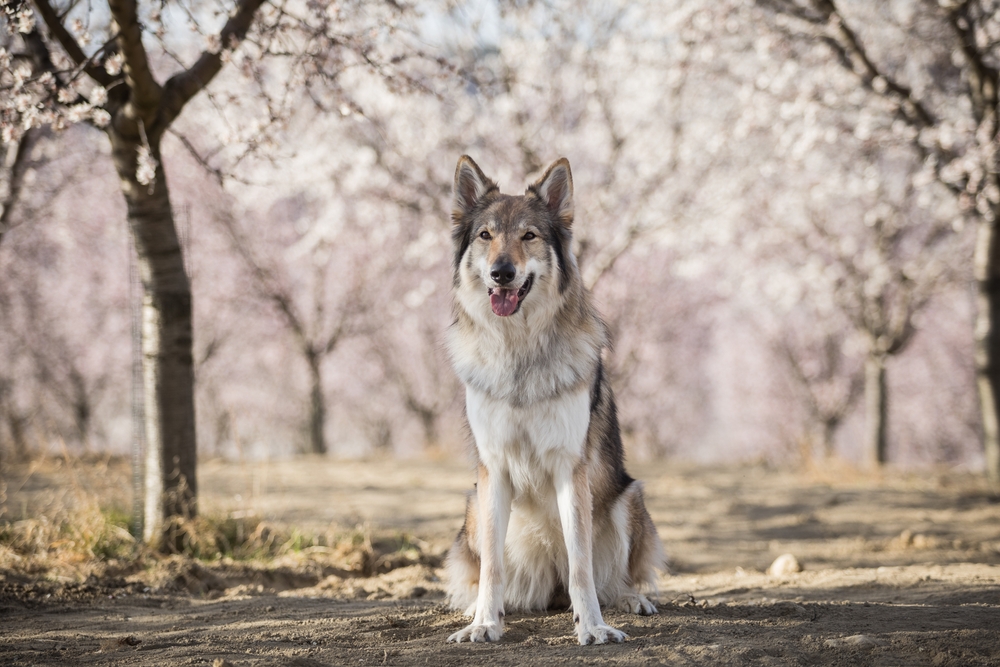
Native American Indian Dogs are a rare breed that embodies the spirit of the wild with their wolf-like appearance and gentle nature. These dogs have a rich history with Native American tribes, used for hunting, herding, and as loyal companions. With their striking looks and powerful build, they have a majestic presence that speaks to their wolf heritage. They are known for their intelligence and versatility, often excelling in various activities from agility to search and rescue. Despite their wild appearance, they are incredibly gentle and form strong bonds with their family.
Training is essential for this breed to channel their intelligence and energy into positive activities. They are naturally protective and make excellent watchdogs, although they are generally not aggressive. Regular exercise and mental stimulation are crucial to keep them happy and healthy. Their thick coat requires regular grooming to maintain its condition and manage shedding. The Native American Indian Dog’s balance of strength, intelligence, and gentleness makes them a living embodiment of their wild ancestors.
12. Shikoku
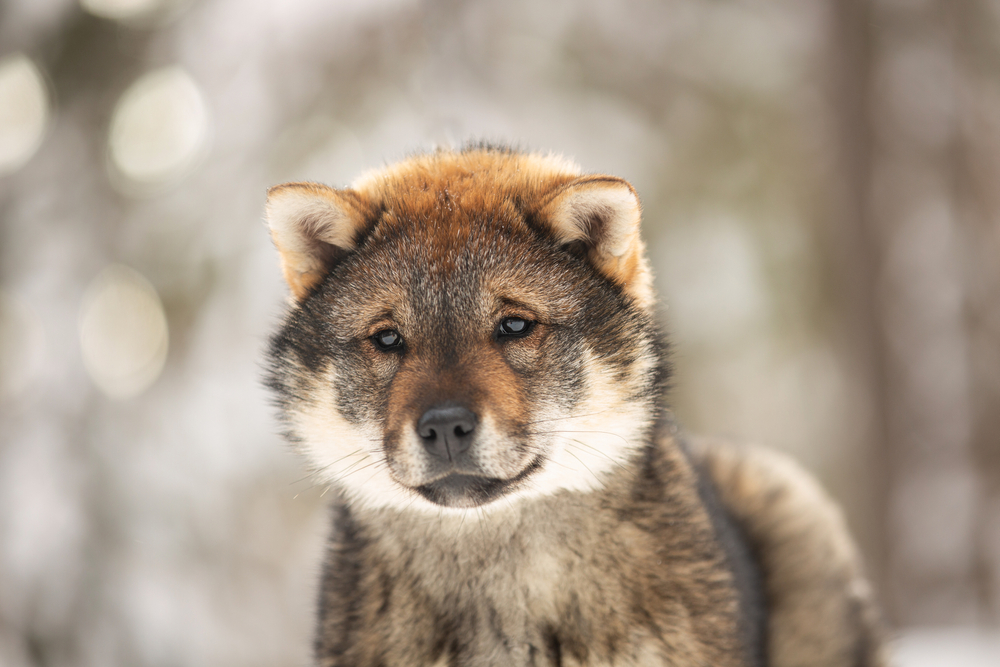
The Shikoku is a rare breed from Japan that carries the heart of a wolf, evident in both appearance and temperament. These dogs have a history of hunting wild boar, requiring bravery and tenacity. Shikokus have a distinct, fox-like appearance, with sharp facial features and a curled tail. They are known for their independent and intelligent nature, often displaying a strong prey drive. Despite their hunting background, they are usually gentle with their family and form strong bonds.
Training a Shikoku requires patience and consistency, as their independent nature can sometimes make them stubborn. Early socialization is important to ensure they are well-behaved around strangers and other animals. Their double coat needs regular grooming to manage shedding and keep it looking its best. Shikokus thrive in environments where they can be active and engaged, as they have high energy levels. Their unique blend of independence and loyalty makes them a fascinating tribute to their wild lineage.
13. Basenji
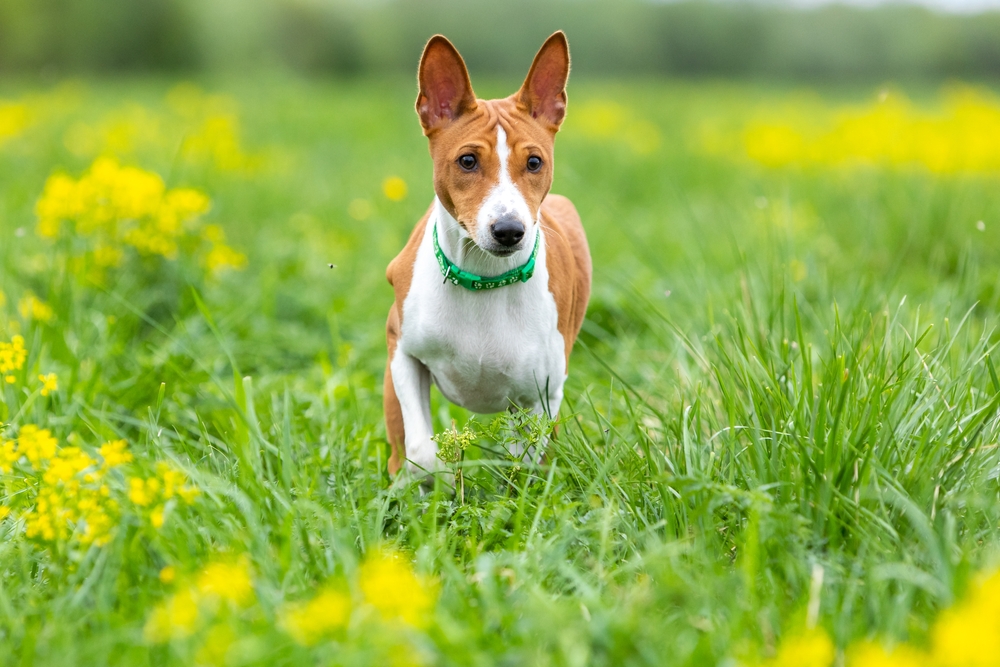
Basenjis are often referred to as the “barkless dog,” but this doesn’t mean they don’t have a voice—far from it. These dogs have a yodel-like sound that is reminiscent of their wild ancestors’ calls. Basenjis hail from Africa and have been used as hunting dogs, showcasing their sharp instincts and keen intelligence. They are known for their independence and can be quite aloof, often resembling a cat in their behavior. Despite their aloofness, Basenjis form deep bonds with their family, often choosing one person as their favorite.
Training a Basenji takes patience, but their intelligence means they can learn quickly with the right approach. They have a high prey drive and love activities that challenge their mind and body. Their short coat is low maintenance, making them easy to groom. Basenjis are also known for their cleanliness and dislike of wet conditions, often avoiding puddles and water. Their unique vocalizations and independent spirit make them a fascinating reflection of their wild heritage.
14. Greenland Dog
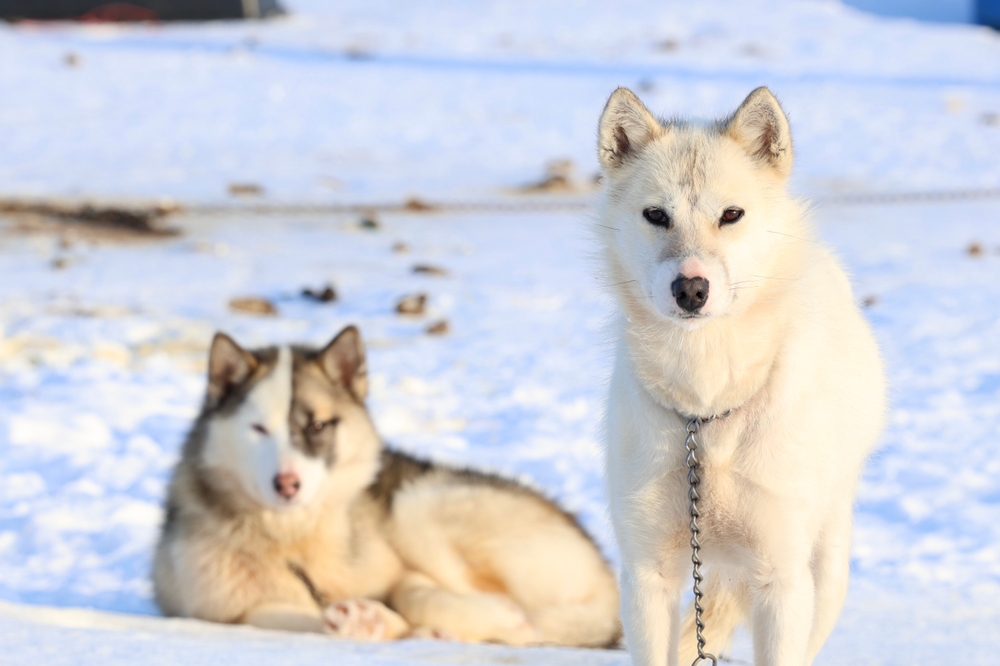
Greenland Dogs are robust and resilient, bred for the harsh conditions of the Arctic. Their powerful build and thick coat make them well-suited for sledding, a task they have performed for centuries. With their wolf-like appearance and boundless energy, they carry the wild spirit of their ancestors with pride. Greenland Dogs are known for their endurance and have a strong work ethic, thriving in environments where they can be active. Despite their working background, they are affectionate with their family and enjoy being part of household activities.
Training a Greenland Dog requires consistency and patience, as their independent nature can make them a challenge. They have a high prey drive and may chase after small animals if given the opportunity. Their thick coat requires regular grooming to keep it in good condition and manage shedding. Greenland Dogs thrive in environments where they have plenty of space to roam and explore. Their blend of strength, loyalty, and wild spirit makes them a testament to their enduring wolf heritage.
15. Canadian Eskimo Dog
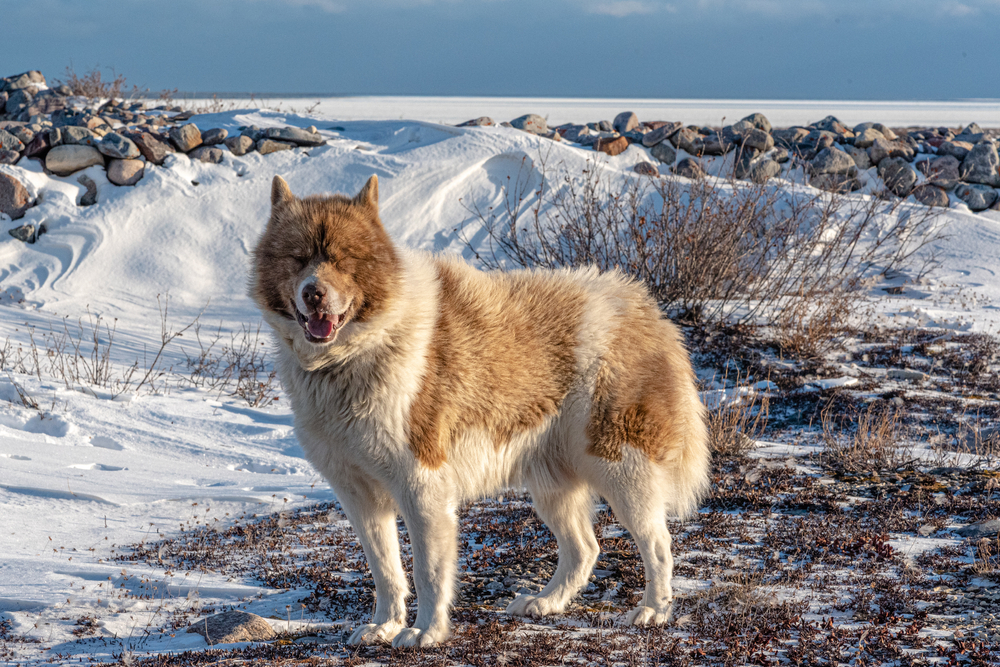
The Canadian Eskimo Dog is a rare breed with a rich history tied to the Arctic’s harsh landscapes. Known for their strength and endurance, these dogs were traditionally used as sled dogs by the Inuit people. Their wolf-like appearance and powerful build speak to their wild ancestry. Despite their rugged exterior, Canadian Eskimo Dogs are known for their gentle and affectionate nature with their family. They have a strong prey drive and a natural instinct for hunting, traits that have been honed over generations.
Training these dogs requires a firm and experienced handler, as their independent nature can make them challenging. They thrive in environments where they can be active and engaged, as they have high energy levels. Their thick coat needs regular grooming to maintain its condition and manage shedding. Canadian Eskimo Dogs are loyal and form strong bonds with their family, often displaying a protective nature. Their unique blend of strength, resilience, and gentleness makes them a fitting tribute to their wild ancestors.
Each of these breeds, with their unique traits and characteristics, offers a glimpse into the wild past that all dogs share. Whether it’s their physical resemblance to wolves or their spirited personalities, they remind us of the fascinating journey from the wild to our homes. So, if you’re ever wondering about the wild heart of your dog, remember that it’s just a howl away.
